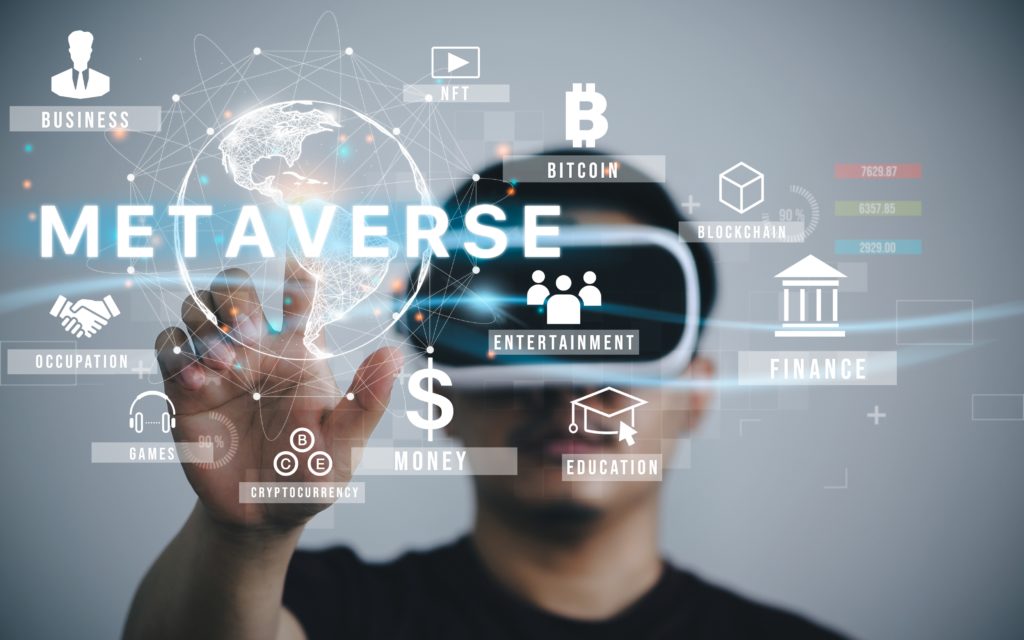
The metaverse is the future of the internet that encompasses a transformative change in how humans and technology interact. “It promises a 3D model of the internet, where virtual reality (VR) and mixed reality offer endless escapism… A place parallel to the physical world where you can live a rich digital life: hang out with friends, shop for real or virtual products, play and create games, purchase and monetize real estate, and much more.” But how that future unfolds is not entirely clear.
The metaverse, as it currently exists, is not one metaverse, but several smaller virtual worlds that are not yet interoperable (and we are not entirely sure that they ever will be.) Separate iterations of these virtual worlds are accessed via special VR headsets, AR goggles, game consoles, smartphones, and PCs and include virtual and augmented realities as well as a digital economy consisting of cryptocurrency and NFTs. The metaverse is far from reaching Mark Zuckerberg’s lofty, idealistic vision of its future. A future where holographic versions of ourselves can attend live concerts while our butts remain firmly planted on our living room sofa.
Far as it is from the futuristic version dreamed about by the tech powers-that-be, the metaverse as it stands poses a whole new set of cybersecurity issues that could have far-reaching implications. ICYMI, cybercrime is already occurring at an unprecedented volume and variety. Toss in the concept of the metaverse, of which anyone can capitalize and where rules don’t seem to exist, and you’ve got some exciting new vectors for cybercriminals to explore. Here are some of the biggest cybersecurity concerns brought about by the metaverse.
Today’s threat landscape is already at peak levels of danger. The Ai and machine learning algorithms central to the metaverse provide even more accessibility to threat actors, whether practiced or rookie. Wired says “protecting the virtual identity of users needs to be top of mind when designing the metaverse. While the metaverse will contain lots of software, users must invest in hardware like smart glasses and VR headsets to get the full picture. This means robust cybersecurity measures for both the expanding digital attack surface and the physical attack surface. In essence, attackers won’t be lacking in attack vectors.”
According to Wired, for the metaverse to safely flourish, it must adopt the following:
All told, however, as the future of the metaverse unfolds, ramped-up cybersecurity measures will be critical to ensuring the safety of personal assets, data, and information. Stay ahead of the impact technology has on cybersecurity with courses from Cyber Phoenix such as Practical Applications of Machine Learning and Cybersecurity for Businesses – The Fundamental Edition, all available in our affordable subscription course service.
Sources:
https://www.wired.com/story/what-is-the-metaverse/
https://www.nasdaq.com/articles/the-future-of-cybersecurity-and-how-itll-evolve-with-the-metaverse